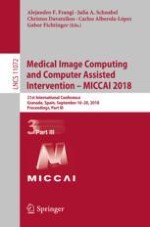2018 | OriginalPaper | Buchkapitel
Probabilistic Source Separation on Resting-State fMRI and Its Use for Early MCI Identification
verfasst von : Eunsong Kang, Heung-Il Suk
Erschienen in: Medical Image Computing and Computer Assisted Intervention – MICCAI 2018
Aktivieren Sie unsere intelligente Suche, um passende Fachinhalte oder Patente zu finden.
Wählen Sie Textabschnitte aus um mit Künstlicher Intelligenz passenden Patente zu finden. powered by
Markieren Sie Textabschnitte, um KI-gestützt weitere passende Inhalte zu finden. powered by
